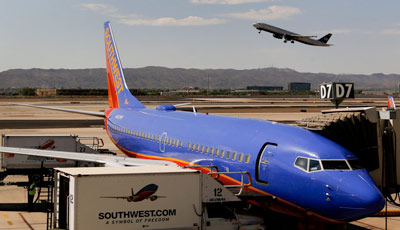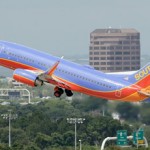The Secret to Southwest’s Success

Every time I fly Southwest Airlines I come away impressed by what they do and how they do it. You don’t have to be a management guru to understand that the company offers insight into one of the toughest corporate challenges out there: maintaining focus, hunger and success in a large organization.
Started in 1971 with just three planes, Southwest now flies more than 100 million passengers a year on a fleet of 680 planes and employs 45,000 people. By some measures, such as domestic passenger origination, it is the nation’s largest carrier. It got there by disrupting the industry and introducing several new approaches to air travel. Recently it opted to acquire another airline, AirTran.
Despite Southwest’s size and success, its employees still give the impression that they are part of a small, aspirational effort — something that very few companies, let alone airlines, have managed to do. From its “bags fly free” policy to complimentary peanuts, it has resisted the paths other airlines have taken to squeeze more out of customers. And the employees remind you of this in quite a concrete manner: On one flight earlier this week, the pilot ended his chatty pre-trip briefing by informing passengers that by not charging us for checked bags, Southwest had saved us collectively “at least $3,000.”
The airline is known for its simple and incredibly efficient approach to operations. Its fleet is dominated by a single type of aircraft, the Boeing 737. Employees manage to turn around planes amazingly quickly between flights, thereby minimizing downtime. And somehow they’re capable of getting even fully booked flights boarded faster than their competitors, even though they don’t pre-assign seats (a feat that I am still trying to figure out).
I observed all this in action this week. Having switched flights at the last minute — something Southwest made incredibly easy and painless — I was given one of the last standby seats. This left me at the very back of the plane, an ideal vantage point for witnessing the speed with which the ground crew swapped out the drink carts in the back galley when we arrived at our destination. By the time I walked off the plane and entered the terminal, the co-pilot had returned to the Jetway with food for the flight crew’s next leg.
By keeping the important things simple and implementing them consistently, Southwest manages to succeed in an industry better known for losses and bankruptcies than sustained profitability. Yet none of this seems to have gone to the company’s head, even after 40 years. As such, the airline serves as a vivid — and rare — reminder that size and success need not contaminate a company’s mission and mind-set, nor erode the addictive enthusiasm of management and staff.
Source: bloomberg





























